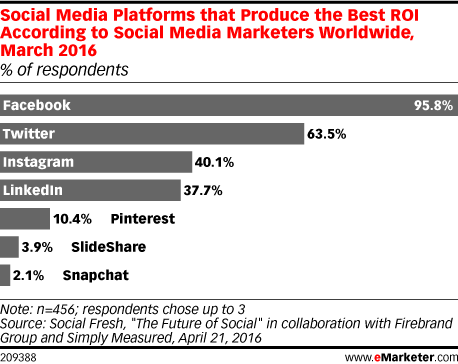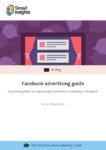While AdWords and Facebook both work on a PPC (pay-per-click) basis, that’s pretty much where the comparison ends.
If your business uses paid search, then you’re no doubt familiar with Google’s AdWords platform. But if you’re thinking about dabbling in Facebooks ads, then there are a few crucial differences that you should know about.
Download Premium Member Resource – Facebook Advertising guide
Brands can still set up Facebook Pages and enjoy some organic exposure free of charge, but as a platform, Facebook is now very much “pay to play”.
Access the Facebook advertising guide
Many advertisers make the mistake of seeing Facebook ads and AdWords in a binary, one-or-the-other sort of way, which is really a case of comparing apples and oranges; each platform has its own benefits and drawbacks, and if you exclude one of them from your marketing mix, then you’re missing out.
The targeting
The key difference between AdWords and Facebook is the way you target your audience. AdWords is a paid search platform, meaning that you bid on specific keywords, such as ‘organic pet food’, which then trigger your ads to appear above the search results when a user performs a Google search that includes that keyword.
Facebook advertising, on the other hand, is a form of paid social, whereby you target your audience using demographic data (e.g. women aged 29 and over) and user behaviour (e.g. liking certain pages, such as ‘Healthy Pets’). When a user meets these criteria, your ads will appear in their newsfeeds.
The goals
The fact that targeting methods differ so much between the two platforms tells us a lot about the way they are used. Put simply, AdWords is a way for you to reach out to new customers, while Facebook allows new customers to find your business.
Because AdWords uses the keyword-bidding model, it means that users are typically primed to buy; for instance, if they’re searching for ‘organic pet food’, then you can be pretty sure that they’re close to making a purchase. For that reason, AdWords is often used as a means of driving sales or other types of conversion.
While Facebook can also deliver a great ROI, the granularity of its targeting options and variety of ad formats (see below) mean that it can be used for a host of other purposes, such as raising brand awareness and driving customer engagement.

The ads
Another key difference between Facebook ads and AdWords ads is the ads themselves. AdWords ads consist purely of text: two headlines of up to 30 characters, and one description line of up to 80 characters. And that’s it! Well, Google Shopping ads are a little different, but when most people talk about AdWords, they’re talking text ads.
Conversely, Facebook offers a wide variety of ad formats, including photo posts, video posts, carousel ads and canvas ads - all of which include images. The visual element is what really sets Facebook advertising apart from Google AdWords, allowing you to create bold, irresistible ads that keep your audience clicking.
A combined approach
As we’ve seen, Facebook ads and Google AdWords are unique platforms that each provide a different set of benefits. The smartest marketers know that instead of seeing them as competitors, you can use both platforms in a complementary manner, with each fulfilling a distinct role in the overall marketing mix.
Thanks to Mark Wallace for sharing their advice and opinion in this post. Mark is the managing director of
Dot Rise SEO, one of the UK’s leading SEO and Facebook marketing agencies.








